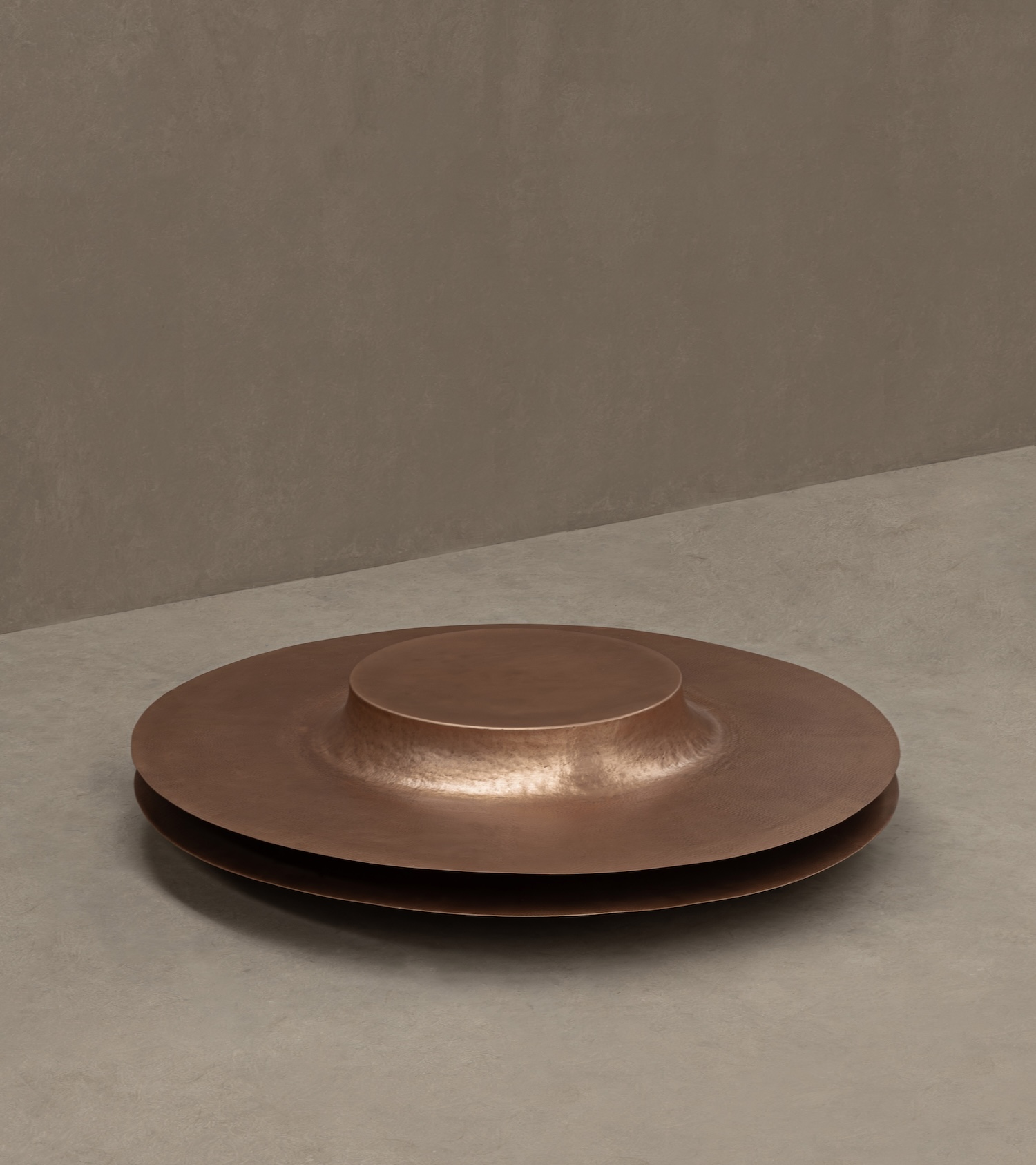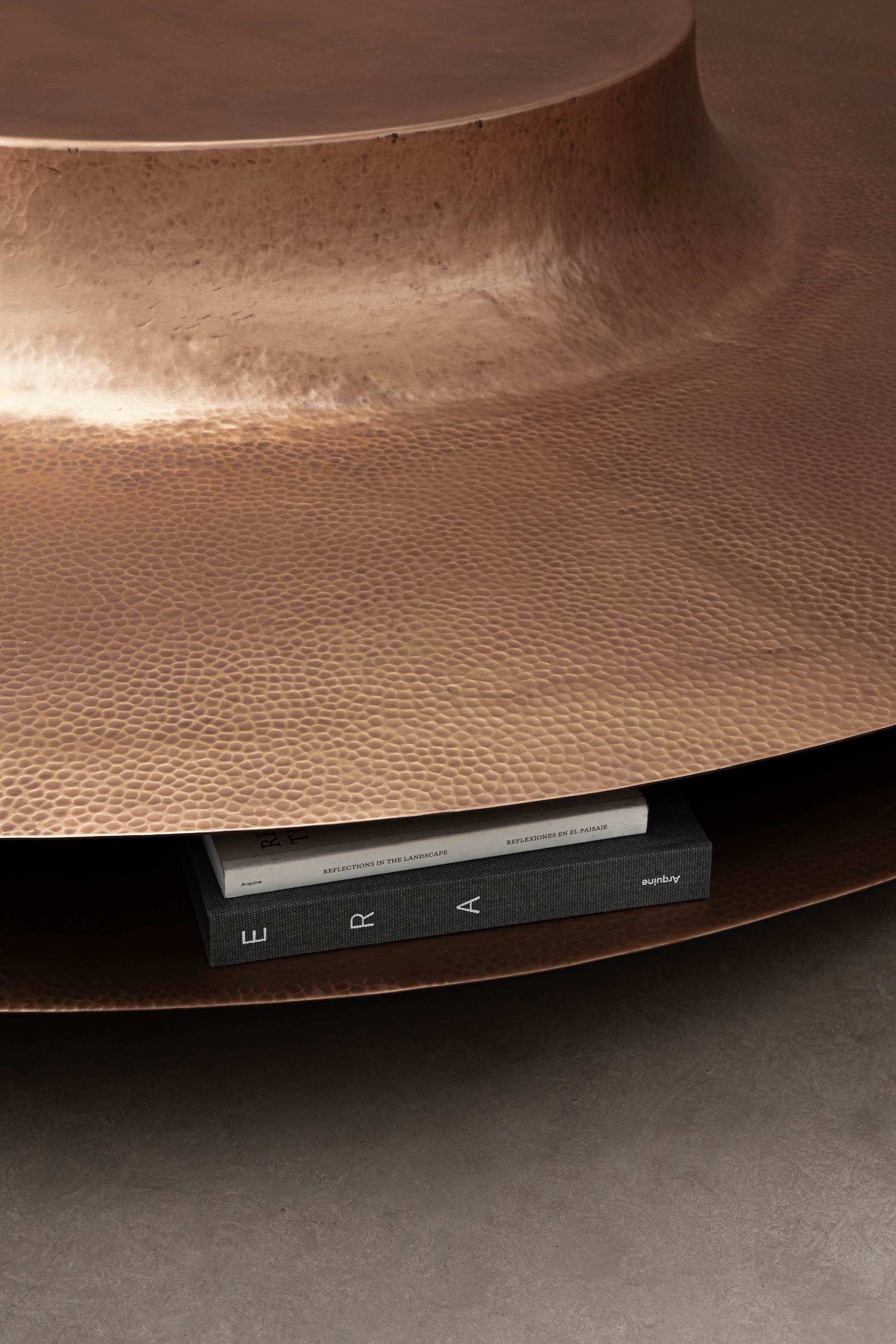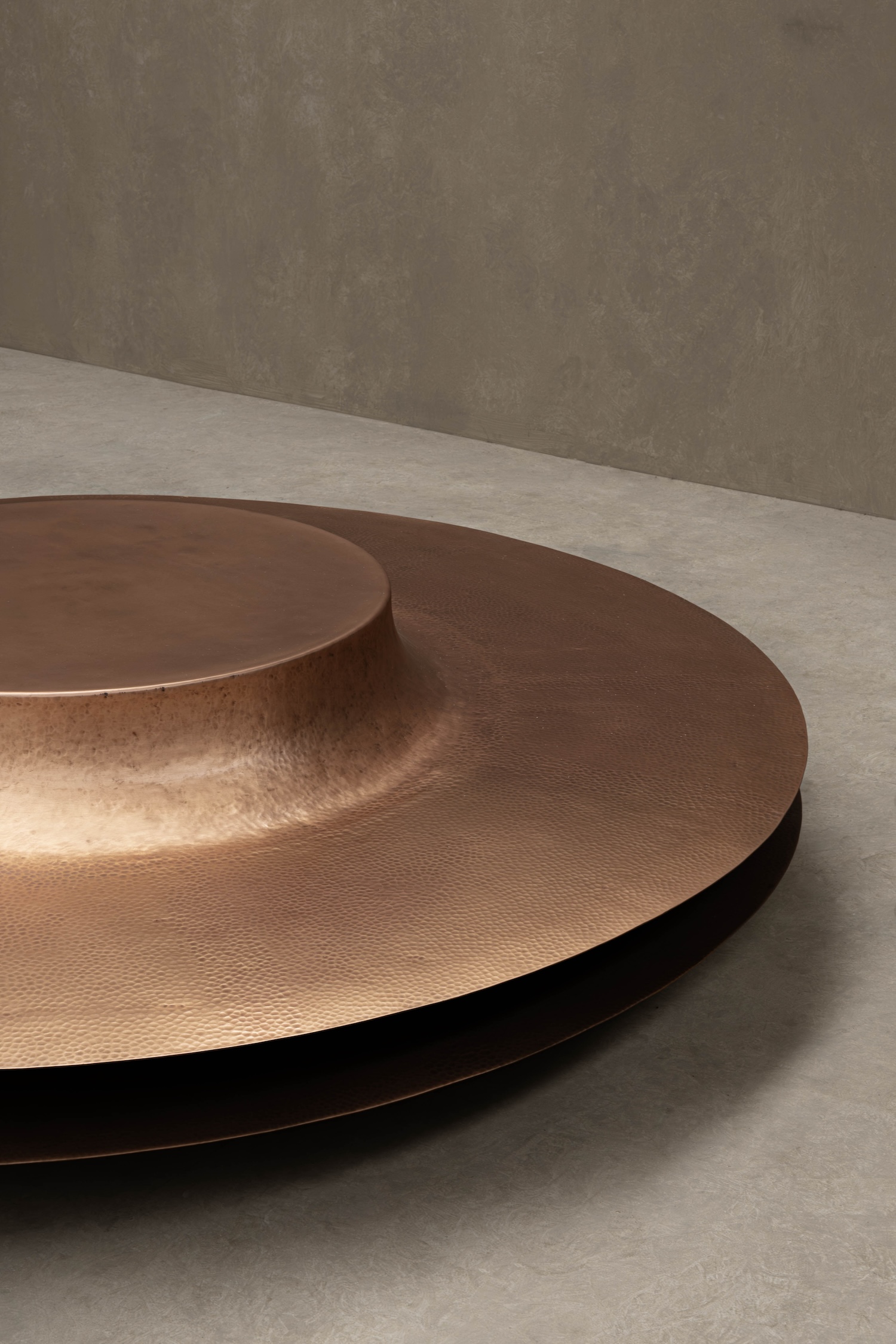OBJ-06 Coffee Table is a minimalist coffee table created by Mexico City-based designer Manu Bañó, recently exhibited in Dubai at gallery Collectional. In the hands of Mexican metalworkers, a sheet of copper becomes a meditation on duality and transformation. The OBJ-06 coffee table, with its mirrored surfaces rippling with concentric hammer marks, speaks to both ancient traditions and contemporary design sensibilities. Each dimple in its surface tells the story of its making – a rhythmic dialogue between artisan and material that echoes through millennia of Mexican metallurgy.
The table’s most striking feature lies in its deceptive simplicity. Two identical copper sheets, separated by a thoughtful void, create a visual tension between positive and negative space. This separation isn’t merely functional – though it cleverly accommodates books and objects – but rather performs a kind of material poetry. The identical surfaces, top and bottom, engage in a silent conversation about symmetry, reflection, and the fundamental nature of copper as both structure and skin.
The hammering technique employed here draws from a deep well of Mexican metalworking tradition. In pre-Columbian times, copper held sacred significance, associated with celestial bodies and divine power. The concentric patterning visible in the OBJ-06 might recall the circular calendars of ancient Mesoamerica, where cosmic cycles were rendered in stone and metal. Yet the piece firmly plants itself in contemporary design discourse through its reductive form and emphasis on material honesty.
What’s particularly compelling is how the table embraces its own making. Rather than hiding the marks of fabrication, it celebrates them. Each hammer blow has left its signature, creating a topography that catches light and shadow in constantly shifting patterns. This transparency of process reflects a broader movement in contemporary design toward authenticity and material truth.
The piece’s copper composition links it to Mexico’s rich mining heritage, while its contemporary form speaks to the country’s emerging position in global design. It demonstrates how traditional metalworking techniques can be reinterpreted through a modern lens without losing their essential character. The result is a coffee table that serves as both functional object and cultural artifact, bridging past and present through material exploration.
In the context of modern interiors, the OBJ-06 coffee table offers a warm counterpoint to more industrial materials, its living surface continuing to develop patina over time. This temporal quality – the way copper records its interaction with the environment – makes each piece unique, a testament to the dynamic relationship between material, maker, and user.





